Bradbury and Dent 1821-1829
The First Office, Lincoln, Lincolnshire
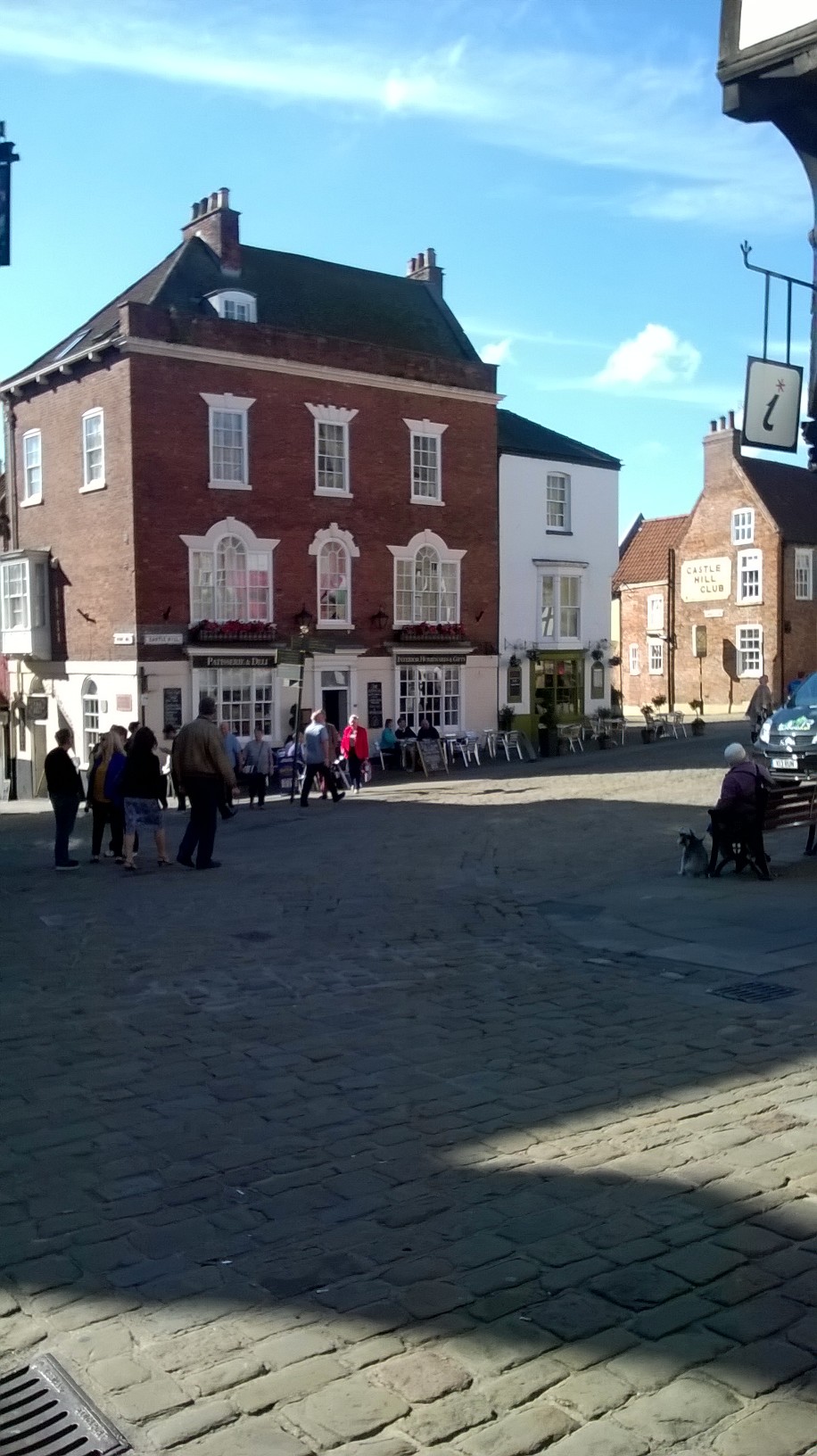
Castle Hill Lincoln site of William Bradbury's first Printing Office in 1821. Author's own photograph.
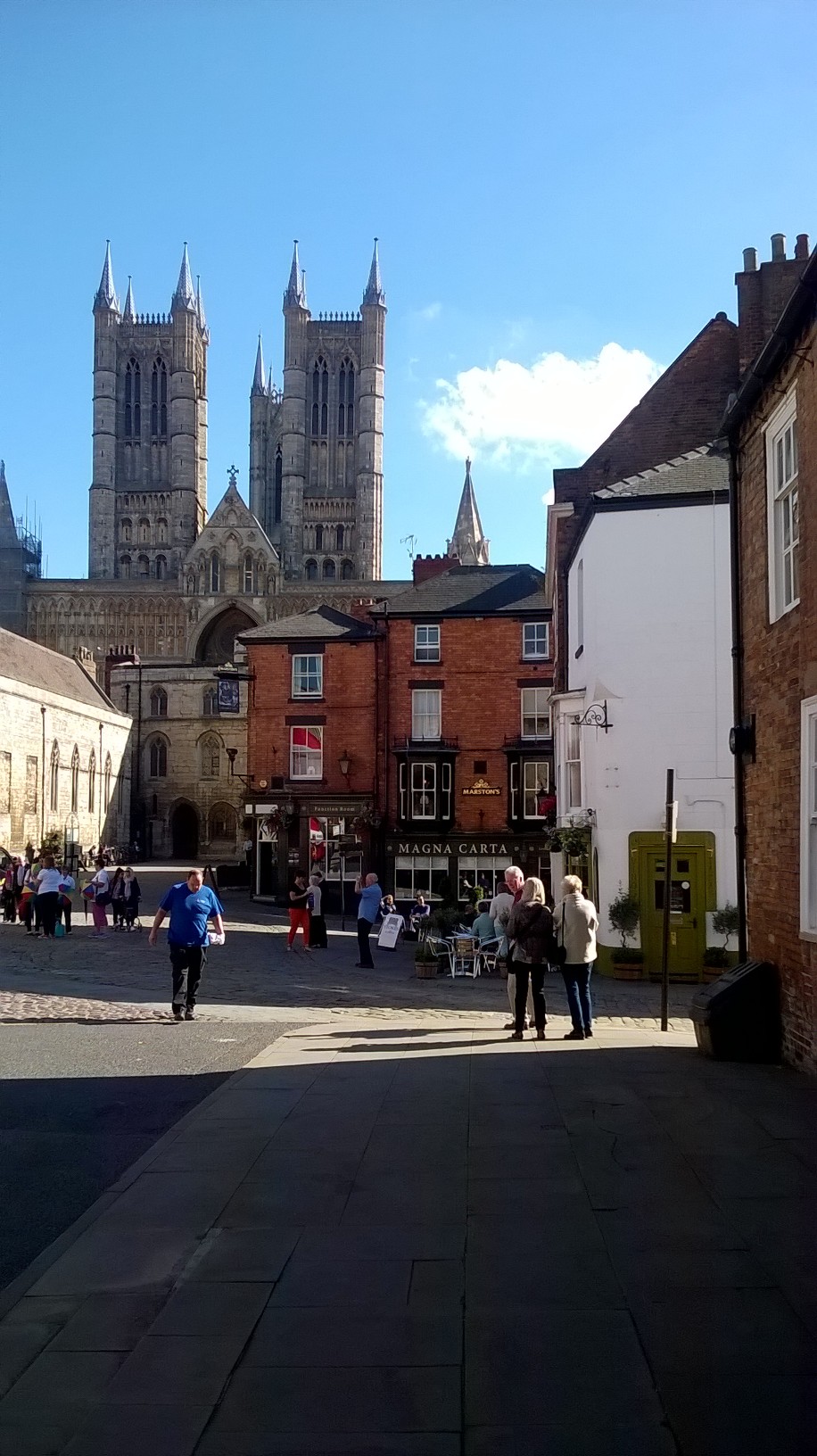
View from Castle Hill Lincoln, site of William Bradbury's first Printing Office in 1821, looking towards Exchequer Gate and Lincoln Cathedral. Author's own photograph.
Tucked away inside the Stamford Mercury newspaper of Friday 30 November 1821, amongst birth, marriage and death announcements, theatre notices, notifications of upcoming assemblies of dancing and cards and balls at the Lincolnshire market towns of Louth and Horncastle, lay a small announcement:
"Printing Office, Castle-Hill, Lincoln. W. Bradbury most respectfully announces to his friends and the public, that he has commenced the Printing, Bookbinding, and Stationery business, and having procured his materials in those branches from the first manufactories in the kingdom, humbly trusts, that the superior manner in which he will be enabled to execute whatever orders he may be honored with will insure him a share of that patronage, which, by assiduous attention and moderate charges, it will be his unceasing study to deserve. Genuine Patent Medicines - A parcel weekly from London."`
Thus commenced a career that would last for forty-four years, taking William Bradbury into the world of print and publishing for such literary luminaries as Charles Dickens and William Makepeace Thackeray, together with proprietorship of the satirical periodical Punch. William Bradbury learned the craft of printing in the City of Lincoln, Lincolnshire. Together with his parents, John and Elizabeth (nee Hardwick) and siblings, William had moved from his birth town of Bakewell in Derbyshire to Lincoln in his childhood; the family were resident in Lincoln by 1811. [1] It had been expected that William would follow his father into farming, however the young William, showing early determination, knew that he wanted to become a printer. His father John acquiesced and enrolled William into a seven year apprenticeship with a richly experienced master printer named John Drury, and his son John Wold Drury. The Drury family had extensive connections within the printing and publishing trades; John Drury's nephew was the poet Keats' publisher, John Taylor, of the London firm of Taylor and Hessey; one of Drury's sons, Edward Bell Drury, was a Bookseller in the Lincolnshire market town of Stamford, and later a printer in Lincoln, who 'discovered' John Clare, the Northamptonshire Poet; and another son James Drury ran a printing business in London between the years 1819 and 1825, before returning to Lincolnshire.
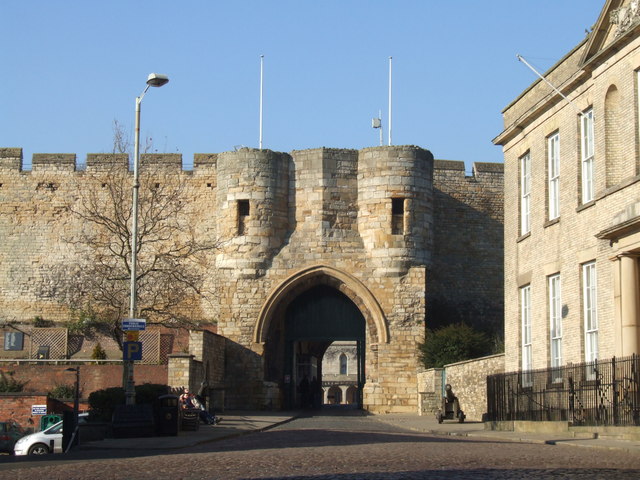
View of the entrance to Lincoln Castle from Castle Hill where William Bradbury opened his first printing office in 1821. Dave Hitchborne [CC BY-SA 2.0 (http://creativecommons.org/licenses/by-sa/2.0)], via Wikimedia Commons
Bradbury opened his first printing office by himself at Castle Hill in the shadow of Lincoln's Cathedral and Castle, in November 1821. This area of the city would have been extremely familiar to William as he had lived with his parents and siblings in the area known as Bailgate or The Bail. This area stretches from the Roman gateway known as Newport Arch through to Castle Hill itself. His father, uncle and brother Orlando were all choristers at the Cathedral and his parents worshipped at the Church of St Mary Magdalene, situated just to the side of Castle Hill. His uncle George was a Hatter with a shop about a quarter of mile away on The Strait, the lower part of the aptly named Steep Hill which leads directly into Castle Hill.
However, less than three months after opening this office, William Bradbury moved his business down into the commercial heart of the city, taking a property in the area known as the Cornhill. This new printing office was situated in a building adjoining a hosiery and lace manufactory, owned by a gentleman named Richard Moulding (c.1792-1842). [2] In October 1822 William took on an apprentice by the name of John Dennis for a period of seven years, and a month later entered into a partnership with his future brother-in-law William Dent. [3] The Cornhill is in the centre of the High Street, to the south of the Stonebow, a busy, bustling centre of commerce. Bradbury joined traders such as linen drapers, a chemist, a grocer and tallow chandler. Together Bradbury and Dent supplied the people of Lincoln with printed items such as almanacks and pocket books, tickets for balls, auction catalogues and accounts books. As a speciality for church ministers and churchwardens of small parishes they offered for sale printed portable banns of marriage registers. They advertised their services as printers, booksellers, bookbinders and stationers. Early in 1824 Bradbury and Dent turned their hand to publishing, with the publication of a poll book for an election carried out in Lincoln in 1823. Published by subscription The Poll for the Election of a Knight of the Shire for the County of Lincoln, taken November 26 to December 6, 1823, gave a full report of all the speeches of the candidates in the election which had been caused by the elevation to the peerage of Lincoln MP Charles Anderson-Pelham (1781-1846). The book also contained satirical prose and songs related to the election and a list of the parishes together with a list of voters with a record of who they voted for, something that would be completely unthinkable to us today. With this first venture into publishing, Bradbury and Dent hoped that the work would be "either for reference or amusement, an object of the highest interest to the county at large. " [4]
By the autumn of 1824, full of ambition and no doubt influenced by the wider Drury family, Bradbury had his sights set on markets much greater than that which the small city of Lincoln could, at that time, provide. So it was that towards the end of 1824 the two men left Lincoln, probably on the distinctively coloured dark blue and canary yellow Lincoln Flyer Coach, on the ten hour journey to London. The printing office together with the existing stock was taken over by Lincoln born printer John Hall (1792-1872). I have been unable to find out whether their young apprentice John Dennis left for London with Bradbury and Dent or stayed near his family in Lincoln; his father, William, died in Lincoln in November 1824, around a month after Bradbury and Dent's departure.
The Move to London
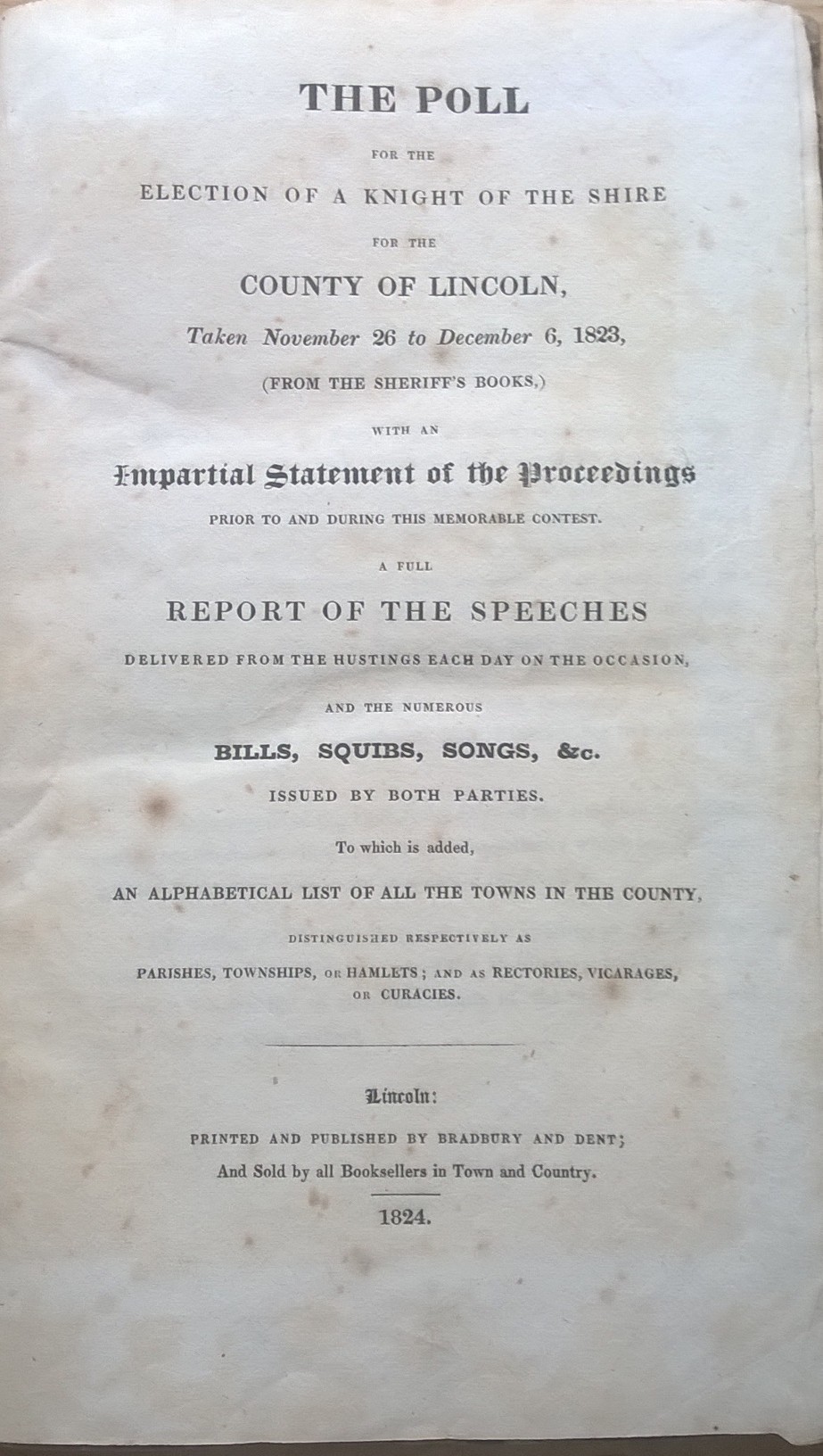
Title Page of The Poll for the Election of a Knight of the Shire, printed and published in Lincoln in 1824 by Bradbury and Dent. Author's own collection
Dent, seven years Bradbury's senior, was a native Londoner who had spent his childhood in Bedford, Bedfordshire with his maternal grandparents. [5] I have not yet managed to establish what took him to Lincoln around 1822, or how he and Bradbury met. His older brother Edward John Dent was a celebrated London watch and clockmaker, who in 1852 won the commission to make the clock for the Palace of Westminster clock tower known as 'Big Ben'. [6]
Upon arrival in London, Bradbury and Dent set up their business, with just one press, in the heart of the London printing industry, and opened their first print shop on the third floor of a building at 76 Fleet Street. [7] Interestingly, James Drury had just moved out of this particular premises after spending two years there and I speculate that he had recommended the property to Bradbury and Dent. Drury moved to 28 Assembly Row, Mile End, where he increased his printing capability from one to two presses, before moving back to Lincoln the following year. Taylor and Hesssey had had premises at 93 Fleet Street since 1806 and had in January 1823 moved their publishing house to much more luxurious premises at 13 Waterloo Place, St James's, London, although they still kept the Fleet Street shop for their retail business. The property at 76 Fleet Street was owned by James Swan, a former printer and paper merchant, and consisted of two adjacent buildings. Although the address was 76 Fleet Street, the property was actually situated in White Lion Court, which was a narrow court running from Fleet Street to Salisbury Square, and accessed between numbers 75 and 77 Fleet Street. Speaking in 1823 James Swan described the upper two floors of one of the buildings as being used as printing offices, a room on the ground floor was let to a gentleman, who may have been an African American, named Anthony Rogerson, who ran a fencing, boxing and gymnastics school from the premises. [8]
Bradbury and Dent had, unwittingly picked a particularly difficult time economically in which to try to expand and grow their business. In April 1825 the London stock market crashed, leading to the closure of some high-profile London banks, and by the end of the year a financial panic had gripped the country. Recession followed in 1826, leading to bankruptcy and business failures; the printing and publishing industries were hit particularly hard. Sir Walter Scott (1771-1832), the poet and novelist, found himself almost financially ruined when two leading publishing houses, Archibald Constable and Co and Hurst, Robinson and Co, were bankrupted. Scott was forced to sell the home that he had had built in North Castle Street, Edinburgh in order to settle debts. Interestingly, working as a Clerk for the publishing house of Hurst, Robinson and Co in 1825 was a young man called Felix Joyce, who was later to become Chief Accountant/Manager for Bradbury and Evans. [9]
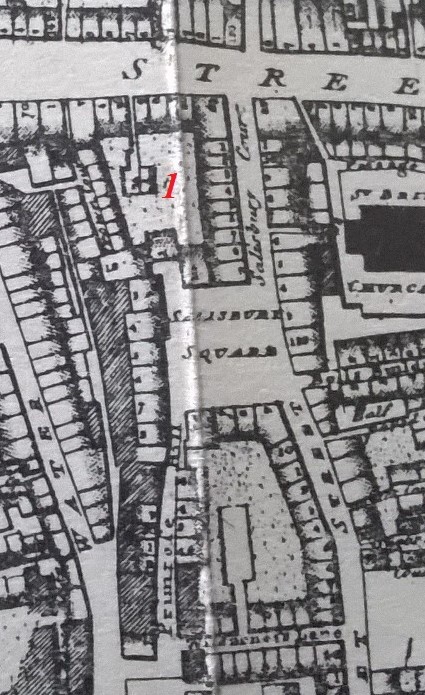
Click to enlarge. Detail from Richard Horwood's 1799 map of London showing 76 Fleet Street marked with a red number 1. This was the site of Bradbury and Dent's first printing office in London.
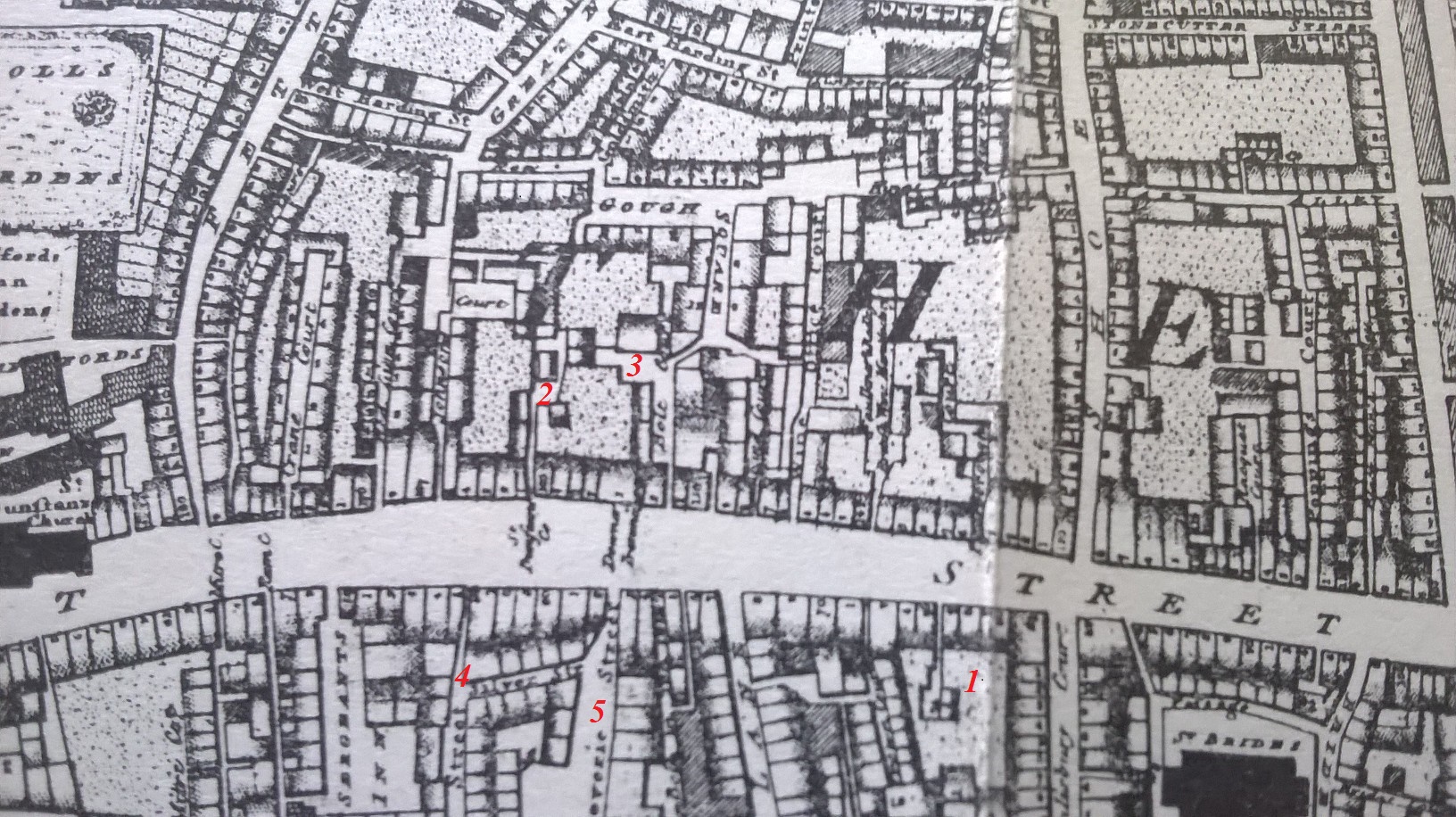
Click to enlarge. Detail from Richard Horwood's 1799 map of London, showing the sites of Bradbury and Dent's London printing offices numbered in red. Number 1 indicates 76 Fleet Street, number 2 shows St Dunstan's Court, and number 3 shows Bolt Court. Numbers 4 and 5 indicate Lombard Street and Bouverie Street which were later occupied by Bradbury and Evans.

Lettering above passage way leading from Fleet Street to St Dunstan's Court. Author's own photograph
Bradbury, Dent and Manning did not stay long at St Dunstan's Court; in mid 1827 they moved the extremely short distance to premises in Bolt Court where Dr Samuel Johnson had leased a house for eight years until his death in 1784. There they leased an apartment known as the long room from the printing firm of Mills, Jowett and Mills. [10] The partners continued under the imprint of Bradbury and Co, Bolt Court, Fleet Street until April 1828. William Bradbury and William Dent then dissolved their partnership with Samuel Manning and Manning went on to establish his own printing business, Samuel Manning and Co, firstly at 75 London-House Yard, St Paul's Churchyard, London and then at 4 London-House Yard. [11]
Interestingly, around this same time, the publisher Edward Moxon found work as a Literary Adviser at the firm of Hurst, Chance and Co, in St Paul's Churchyard, which had been established by the publisher Thomas Hurst following the collapse of Hurst, Robinson and Co. Whilst there Moxon met and formed a friendship with Frederick Mullett Evans, a friendship which was to last for the remainder of Moxon's life. Printing for Hurst, Chance and Co at this same time were Samuel Manning and Co, and also, importantly, Bradbury and Dent. I wonder if this is how William Bradbury and Frederick Mullett Evans came to know each other. I speculate that this is also where Bradbury and Evans met their future employee Felix Joyce. As noted previously, Joyce was employed as a Clerk at Hurst, Robinson and Co, and may well have moved with Thomas Hurst to Hurst, Chance and Co following the former firm's collapse. On page 134 of his book The Punch Brotherhood, Table Talk and Print Culture in Mid-Victorian London, Patrick Leary states that in a diary entry for 26 January 1859 Punch magazine staff member Henry Silver recorded his astonishment that Felix Joyce "had once been Bradbury's master." Perhaps this occurred around this period.

Tankard from the Oxford Arms Inn, Warwick Lane, London, showing the initials of William Bradbury's grandson William Laurence Bradbury. Photograph courtesy of a Bradbury family member.
During this same period Bradbury and Dent moved again, this time to Oxford Arms Passage, which was just to the west of Warwick Lane by St Paul's Cathedral. Oxford Arms Passage led to the Oxford Arms Inn, a 17th century galleried coaching inn which was sadly demolished in 1878 after falling into ruin. It had been established before the Great Fire of London of September 1666, being referred to in an advertisement in 1672: "These are to give notice that Edward Bartlett, Oxford Carrier, hath removed his inn in London from the Swan at Holborn-bridge, to the Oxford Arms, in Warwick Lane, where he did inn before the Fire; his coaches and wagons going forth on their usual days, Mondays, Wednesdays and Fridays. He hath also a hearse, with all things convenient, to carry a corpse to any part of England." [12] William Bradbury and William Dent would no doubt have drunk at the Oxford Arms Inn; to the left hand side of this article is a photograph kindly sent to me by a descendant of William Bradbury, showing a tankard from the inn that has been passed down through the family. Underneath it is heavily inscribed with the words 'Oxford Arms' and 'Warwick Lane', and the outside is engraved with the initials of Bradbury's grandson William Laurence Bradbury.
Bradbury and Dent's business relationship reached a natural conclusion towards the end of 1829. In June 1825 the two men had become brothers-in-law when William Dent had married William Bradbury's sister Mary at St. Bride's Church on Fleet Street, London, and so the two men were to retain a familial connection for the rest of their lives. However their business partnership was dissolved by mutual consent on 31 December 1829, formalised on 15 May 1830. William Dent remained as a printer until his death from heart disease in 1858 at the age of sixty-five. William Bradbury formed a new partnership early in 1830 with a young man by the name of Frederick Mullett Evans.
References
- ^ see Lincoln St Mary Magdalene Parish Records - Marriages & Banns (1811-1812). John Bradbury was a witness to the marriage of William Dobson and Ann Waits 22 July 1811
- ^ Stamford Mercury 1 March 1822
- ^ Stamford Mercury 15 November 1822
- ^ Stamford Mercury 12 December 1823
- ^ Information courtesy of a Dent family member.
- ^ The Life and Letters of Edward John Dent, Chronometer Maker and some account of his Successors (1977) Vaudrey Mercer
- ^ A Directory of Printers and Others in Allied Trades London and Vicinity 1800-1840 (1972) Willliam B Todd page 23
- ^ Morning Chronicle 28 October 1823
- ^ Leeds Intelligencer 26 May 1825
- ^ London Society an Illustrated Magazine Volume xxviii 1875
- ^ A Directory of Printers and Others in Allied Trades London and Vicinity 1800-1840 (1972) William B Todd page 125
- ^ Oxford Journal 17 March 1877
